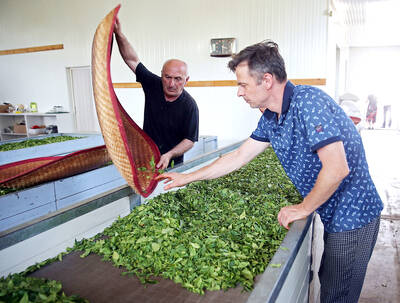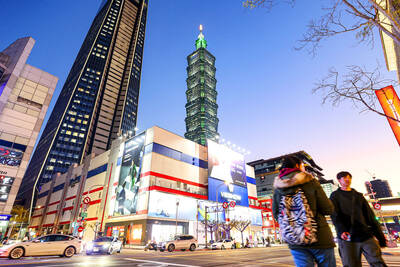Japan incentivizing its companies to shift manufacturing facilities out of China and adding Bangladesh to a list of preferred destinations for relocating the factories might give the nation’s economy a boost.
“As the COVID-19 pandemic started in China, Japanese companies needed to diversify” their supply chains further, Japanese Ambassador to Bangladesh Naoki Ito said in an interview. “This will provide an opportunity for Bangladesh.”
Japan’s nudge to relocate companies comes at a time when a special economic zone (SEZ) is being developed in Bangladesh to attract Japanese firms’ production facilities.
The industrial zone sprawling on 405 hectares in the Araihazar sub-district, 32km from the capital Dhaka, is expected to bring in US$20 billion in Japanese investment, the Bangladesh Economic Zones Authority said.
For years, Japanese manufacturers have sought lower labor costs and supply-chain diversification by moving some output out of China, as wages rose and infrastructure in countries like Vietnam and Bangladesh improved.
Over the past 10 years, the number of Japanese companies operating in Bangladesh has tripled to about 300, Ito said.
Japan has allocated US$350 million in special loans to set up the US$1 billion industrial zone, making it the largest such assistance for an SEZ in Asia, Ito added.
The Araihazar Industrial Park, which is to be operational by next year, is seeking to draw new investments from automakers, such as Suzuki Motor Corp and Mitsubishi Corp, Ito said.
Japan Tobacco Inc and Honda Motor Co are so far among the largest Japanese investors in Bangladesh.
The nation occupies a geographically strategic location linking South Asia and Southeast Asia, and Japan is planning a 177.77 billion taka (US$2.1 billion) deep-sea port on Matarbari Island.
One of the world’s most populous countries, Bangladesh has 160 million people residing in a land area that is about 40 percent of Japan.
Bangladesh’s economy, which grew an estimated 5.2 percent in the year ended in June last year, is expected to expand 7.4 percent in the current financial year.
While that is slower than the 8.2 percent pace previously forecast, it still puts the nation ahead of regional peers on the growth metric.
The country nestled between India and the Bay of Bengal is a destination with “good and strong” prospects for Japanese companies, Ito said.
“The pace of recovery is faster in Bangladesh, compared with neighboring countries,” Ito added.

When Lika Megreladze was a child, life in her native western Georgian region of Guria revolved around tea. Her mother worked for decades as a scientist at the Soviet Union’s Institute of Tea and Subtropical Crops in the village of Anaseuli, Georgia, perfecting cultivation methods for a Georgian tea industry that supplied the bulk of the vast communist state’s brews. “When I was a child, this was only my mum’s workplace. Only later I realized that it was something big,” she said. Now, the institute lies abandoned. Yellowed papers are strewn around its decaying corridors, and a statue of Soviet founder Vladimir Lenin

UNCERTAINTIES: Exports surged 34.1% and private investment grew 7.03% to outpace expectations in the first half, although US tariffs could stall momentum The Chung-Hua Institution for Economic Research (CIER, 中華經濟研究院) yesterday raised its GDP growth forecast to 3.05 percent this year on a robust first-half performance, but warned that US tariff threats and external uncertainty could stall momentum in the second half of the year. “The first half proved exceptionally strong, allowing room for optimism,” CIER president Lien Hsien-ming (連賢明) said. “But the growth momentum may slow moving forward due to US tariffs.” The tariff threat poses definite downside risks, although the scale of the impact remains unclear given the unpredictability of US President Donald Trump’s policies, Lien said. Despite the headwinds, Taiwan is likely

UNIFYING OPPOSITION: Numerous companies have registered complaints over the potential levies, bringing together rival automakers in voicing their reservations US President Donald Trump is readying plans for industry-specific tariffs to kick in alongside his country-by-country duties in two weeks, ramping up his push to reshape the US’ standing in the global trading system by penalizing purchases from abroad. Administration officials could release details of Trump’s planned 50 percent duty on copper in the days before they are set to take effect on Friday next week, a person familiar with the matter said. That is the same date Trump’s “reciprocal” levies on products from more than 100 nations are slated to begin. Trump on Tuesday said that he is likely to impose tariffs

HELPING HAND: Approving the sale of H20s could give China the edge it needs to capture market share and become the global standard, a US representative said The US President Donald Trump administration’s decision allowing Nvidia Corp to resume shipments of its H20 artificial intelligence (AI) chips to China risks bolstering Beijing’s military capabilities and expanding its capacity to compete with the US, the head of the US House Select Committee on Strategic Competition Between the United States and the Chinese Communist Party said. “The H20, which is a cost-effective and powerful AI inference chip, far surpasses China’s indigenous capability and would therefore provide a substantial increase to China’s AI development,” committee chairman John Moolenaar, a Michigan Republican, said on Friday in a letter to US Secretary of